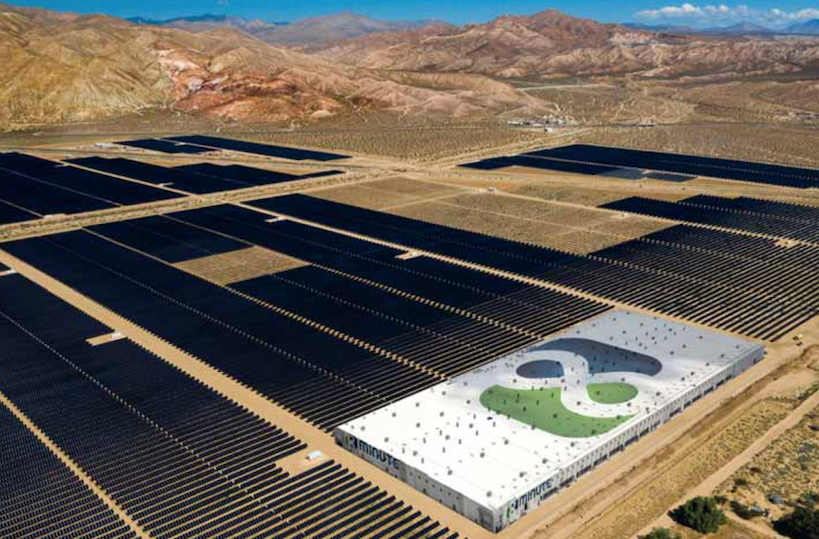
The value of energy storage increases with growing shares of renewable energy on the grid, but the availability and cost of storage will determine how successful decarbonisation with renewables can be.
That’s one of the key takeaways of a new study from the Massachusetts Institute of Technology (MIT) and Princeton University’s Andlinger Center for Energy and the Environment (ACEE), supported by General Electric (GE). Researchers examined battery storage to determine the key drivers behind its present economic value, as well as the likely dynamics of what happens when deployment increases and what that implies for the long-term cost-effectiveness of energy storage.
Enjoy 12 months of exclusive analysis
- Regular insight and analysis of the industry’s biggest developments
- In-depth interviews with the industry’s leading figures
- Annual digital subscription to the PV Tech Power journal
- Discounts on Solar Media’s portfolio of events, in-person and virtual
As generation from variable renewable energy sources such as solar and wind increases its share of electricity supply, the economic value of storage rises, the study, published in the journal Applied Energy, found. However, as storage penetration increases, energy storage resources begin competing to provide the same set of grid services, resulting in a decline in the economic value of that storage.
According to the study’s Abstract, increasing the penetration of variable renewable energy “from 40% to 60% increases the value of storage, but only enough to make storage capacity up to 4% of peak demand cost-effective at current lithium-ion capital costs”. If capital costs of Li-ion batteries fall to US$150 per kWh for four-hour duration storage in future, that “cost-effective storage penetration range” increases to between 4% and 16%.
Value of storage still difficult to monetise, cost-effective long-duration remains overall goal
Co-author Jesse Jenkins tweeted out yesterday that a detailed electricity system planning model was used by the team. It looked at load and renewable energy profiles consistent to the US Northeast and southern regions, according to the Abstract. Jenkins, the report’s lead author Dharik Mallapragada and MIT postdoctoral associate Nestor Sepulveda, together found that at present, “the substitution of batteries for generation or transmission capacity is the primary source of storage value”.
“Other sources of storage value include: providing operating reserves, avoiding fuel cost + wear & tear incurred by cycling on and off gas plants, and shifting energy from low price periods to high value periods (energy arbitrage)—but the these sources are secondary in importance,” Jenkins tweeted.
In an MIT Energy Initative blog yesterday, Dharik Mallapragada was quoted as saying that there are limited market opportunities to monetise this capacity substitution value. At present, capacity markets “may or may not adequately compensate storage for providing energy during peak load periods,” Mallapragada said.
One way to more effectively capture storage value in regulated markets could be for developers and utilities to integrate batteries, wind and / or solar generation into ‘hybrid’ projects that “implicitly capture capacity substitution value,” Mallapragada told MIT Energy Initiative.
Capacity from energy storage also cannot yet be seen as a like-for-like replacement for natural gas generation. While batteries are already competitive with new-build gas peaker plants which only provide energy at peak times for about two hours, as found by BloombergNEF and others recently, Jenkins noted that adding 1MW of storage capacity displaces less than 1MW of natural gas plant capacity.
“The reason: to shut down 1MW of gas, storage must not only provide 1MW of power, but also be capable of sustaining production for as many hours in a row as the gas capacity operates.
“That means you need many hours of energy storage capacity (megawatt-hours) as well.”
Defining that as being 8-10 hours of storage or more, Jenkins said that the same team will be conducting a follow-up study evaluating the “potential role and value of long-duration energy storage technologies”. Meanwhile the US Department of Energy (DoE) appears to agree.
At the Energy Storage Digital Series online summit held in May this year, DoE director of energy storage research Dr Imre Gyuk spoke of the importance of cost-effective long duration storage technologies in a successful clean energy transition, as well as market and regulatory design that captures the value of those technologies. The DoE has kicked off a Grand Energy Storage Challenge, where it seeks to accelerate development, commercialisation and utilisation of “next-generation energy storage”.
The Department this week produced a Draft Roadmap for the competitive challenge and opened a Request for Information (RFI) that seeks stakeholder input on that document. The DoE’s end goal is to help develop long-duration storage technologies that can be manufactured in the US, deployed in the US and then exported overseas.






